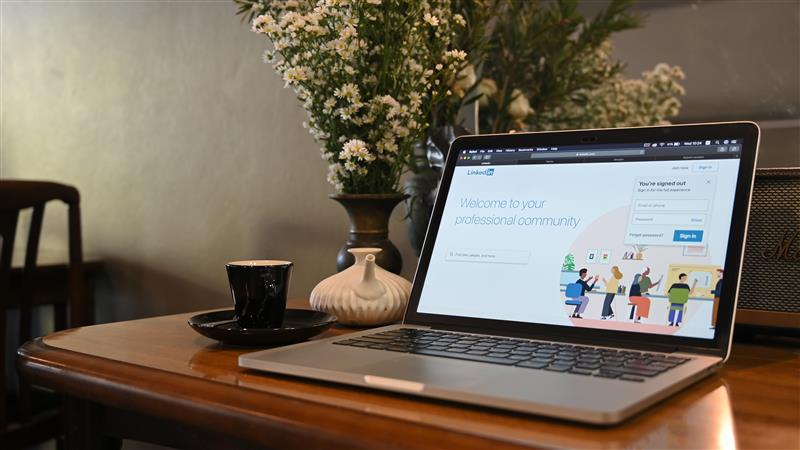LinkedIn Connection Etiquette: Building a Professional Network With Strong Fondations
Connection etiquette is one of the key ‘need-to-know’ areas identified by my LinkedIn trainees and clients.
In truth, it’s one of the most misunderstood aspects of using LinkedIn.
And it’s clear from speaking to people in business and in my training workshops that so many have built up their first-degree connections poorly by:
- Connecting to as many people as possible just to appear well-networked.
- Having no real guidelines or standards of their own.
- Forgetting about the social and professional connections they already have in real life.
The less strategic people are with connection building, the more problems they create — including:
- Seeing a lot of irrelevant content.
- Finding it harder to focus on interacting with their primary audiences.
LinkedIn’s algorithm also tests your content with your closest connections first. If most of your network includes people you barely know or have no professional link with, you’ll reduce the chances of early engagement — and that makes your content less visible to everyone else.
Why Connection Etiquette Matters
LinkedIn now has over 1.1 billion members worldwide (as of late 2025). That scale means two things: opportunity and saturation . Studies from several outreach agencies and LinkedIn’s own marketing data show that personalised, relevant connection requests achieve far higher acceptance rates (typically between 30% and 60%, depending on the industry and approach).
But connecting for the sake of volume doesn’t build influence; it dilutes it.

Build Strategically, Not Randomly
When I work with clients to improve their understanding and approach to connection building, I encourage them to think carefully about their target audiences. And also who will add value to their network, and who in turn They can add value to !
One useful exercise is to identify social contacts, friends and relations in business. It’s surprising how often people focus on connecting with complete strangers while ignoring those they already know — people they grew up with, studied alongside, or worked with years ago. These people can be your most valuable connections.
Other key priorities for connection might include:
- Current and past clients — maintaining those relationships can lead to repeat business and referrals.
- Prospects who’ve already enquired about your services — a good reminder of the importance of an updated CRM system.
- Peers within your industry — people you’d like to develop deeper professional relationships with over time.
Should You Send a Connection Note?
One of the most common questions that comes up in training sessions is:
“Should I send a note with my connection request?”
In most cases, yes — if there’s some form of context.
For example:
- You’ve met them at a networking event.
- You’ve engaged with one of their posts.
- You share a mutual connection or group.
That’s when a short, tailored note helps. Studies show that messages under about 300 characters perform best. But here’s the nuance: adding a generic or lazy note (“I’d like to add you to my network”) actually lowers the acceptance rate. People can spot copy-and-paste outreach a mile off.
So — use your judgement. A well-written note gives you an edge; a careless one works against you.
Example Notes That Work
Here are a few short templates you can adapt:
- After a conversation or event
“Hi [Name] — great to meet you at [event]. I enjoyed our chat about [topic] and thought it’d be good to connect here ” - After engaging with someone’s content
“Hi [Name] — I really liked your recent post on [topic]. I’m working on something similar and would love to connect.”
Keep it short, relevant … and non spammy!
What the Data Says
Recent LinkedIn and agency studies suggest:
- Connection acceptance rates average around 30–45% overall, rising significantly when the invite includes a relevant, personalised note.
- Personalised messages that demonstrate a genuine reason to connect have far higher reply rates.
- Timing matters — engaging with someone’s content shortly before sending a request can improve acceptance.
- However, superficial personalisation (“I see we’re both in marketing!”) often performs worse than no note at all.
Connection Etiquette Checklist
Before you hit “Connect”, run a quick self-check:
- Do I have a clear reason for connecting?
- Is this person professionally relevant to me?
- Have I engaged with them before?
- Am I adding a short, personal note (if appropriate)?
- Will I respect the connection — no immediate pitch or sales message?
Common Mistakes to Avoid
- Sending irrelevant connection requests … and making it a numbers game!
- Following up immediately with a sales pitch.
- Trying to grow numbers for vanity rather than strategy.
LinkedIn connection etiquette is ultimately about intentionality. You’re curating a professional network, not trying to get to 10,000 connections
